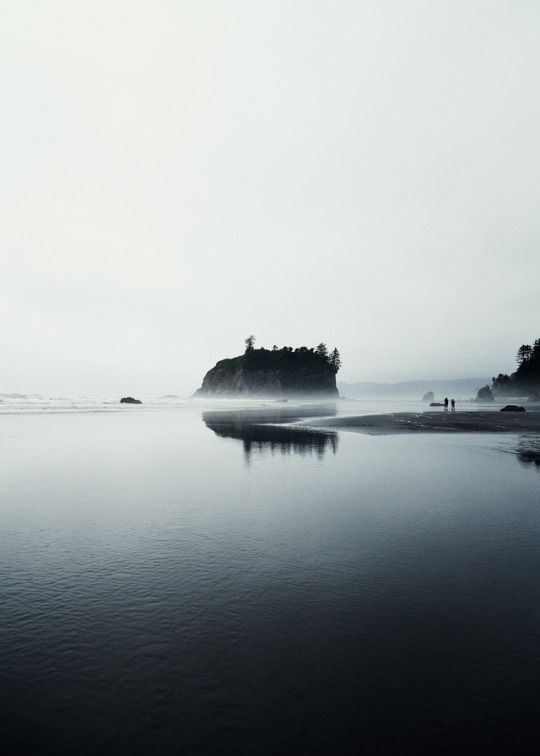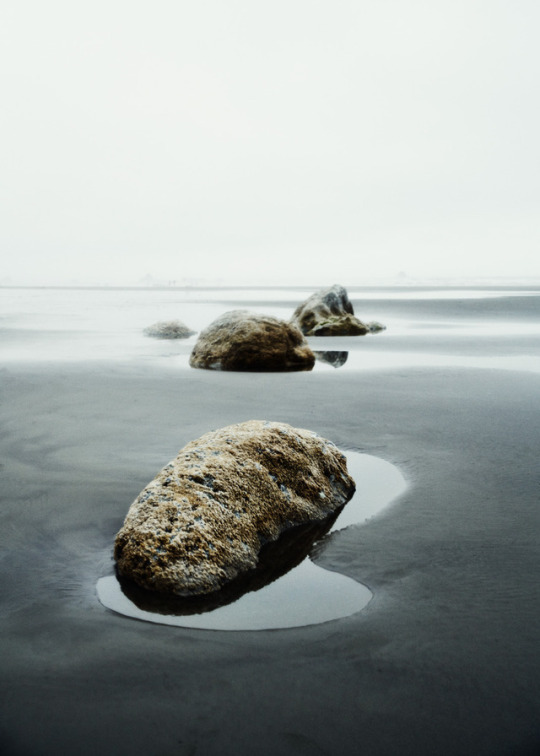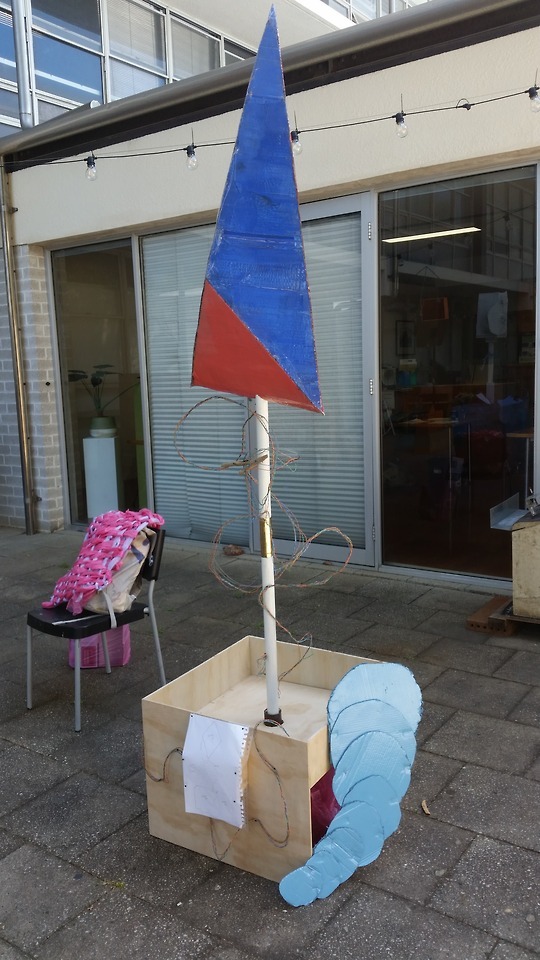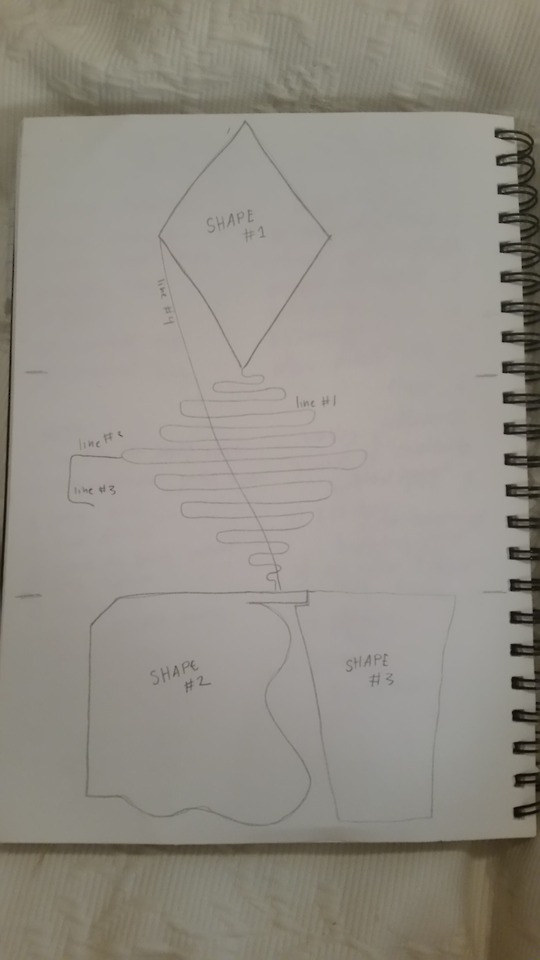Text
Artist Statement
What began as a seemingly innocent drawing exercise in class has become a functioning birds nest for the Carnaby Cockatoo; the thought processes behind this sculpture were problem solving. Life was simple and then came along a mind boggling conundrum, how does a first time sculptor turn a dysfunctional 2D sketch into a 3m tall 3D sculpture that not only breaks the 2D dimension but can house a Cockatoo? The diamond shape that haunted my initial sketch was the first element to transform; I wished to make something that from afar resembled a diamond but in reality was nothing of the sort. Starting off as folds in a piece of paper then a cardboard maquette became a full sized 3D shape which changes form as you circle around the piece. I believe that interactivity with the viewer is important for evoking a viewer response and allows a connection to be made through not placing the sculpture on a pedestal out of arms reach or view; the need to circle around the sculpture and look at it up close and from afar to see the varying angles and shapes that can be formed employs that sense of interactivity. This idea also presented itself in the out of existence inflatable envisioned to have engulfed the plinth; initially I wished for viewers to physically pump up a handcrafted inflatable using an attached bike pump.
An idea that followed on from my last assignment was the use of bold contrasting colours counteracting with natural plywood; the electric blue vs the faded pink dominates the sculpture; it’s relationship to the humble plywood plinth is formed by the multi-coloured electrical wires that wind their way to the base of the sculpture; the organic line formed by the electrical wires provides another element of contrast between a man made medium being woven in such a way that allows it to construct its own organic path.
As the Carnaby Cockatoo is a species under threat I wished to be as sustainable as I could when sourcing materials; hence when looking for materials to spark creative through I started off by driving around verge collections for hours and then playing around with cardboard that would otherwise be discarded and sorting through items in my garage; as if I was “making something from nothing” (Lippard 1978). Majority of items were already weatherproof but the cardboard required water proofing. Initially thinking of a linseed-oilXbeeswaxXturpentine concoction I settled for a cheaper and quicker method of using wood sealant which provided a water resistant gloss coat on both the inside and outside of the cardboard. Other issues that arose with using recycled materials was deterioration; the rust on my umbrella stand has eroded its strength but that was nothing a bit of welding couldn’t fix!
Overall producing something that was bold in colour, in angles and in form but at the root was humble and organic was the thought process behind the manner in which I solved all the problems presented by the initial sketch.
2 notes
·
View notes
Photo




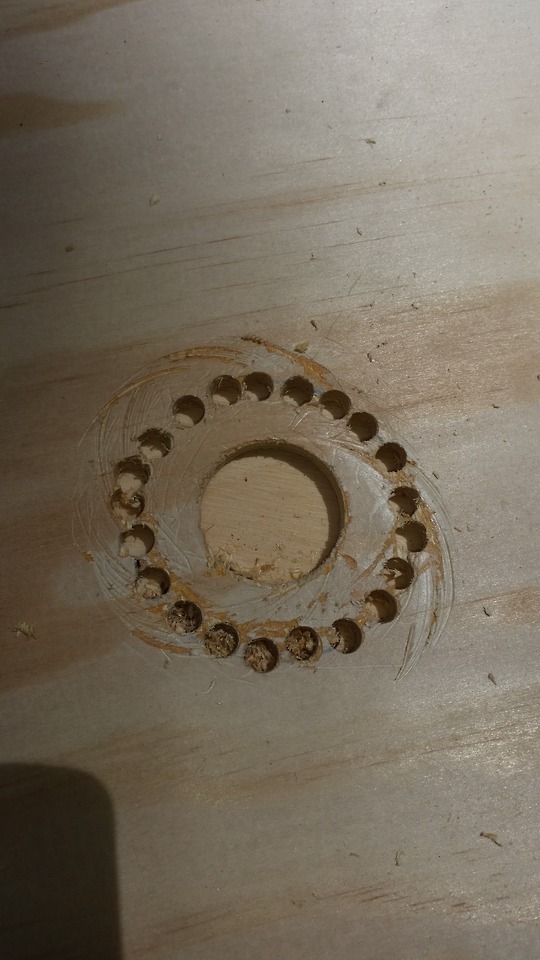
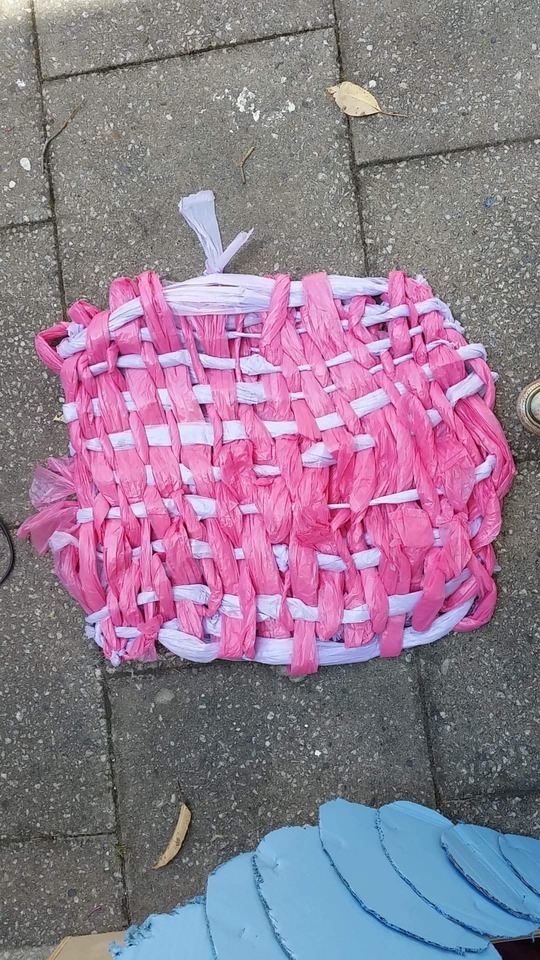
Challenge; my salvaged umbrella stand had rusted so much it broke and I had to weld it together again. Due to the rust I had to grind down the 2 surfaces ready for welding. Again due to the rust the ‘earth’ for the welder wouldn’t form a connection; chipping away some rust and attaching it directly to my metal solved this.
Challenge; my inflatable didn’t work so I had to come up with a new idea to resemble shape #2 of my drawing. Using the materials i already had (plastic bags and cardboard) I made a weave out of plastic and I also created a cardboard shape. I opted for using the cardboard shape and together with my plinth and electrical it mimics both shape #1 and #2 as a combined shape.
Challenge; the new sunken top of my plinth meant it was too short to cover my metal tube and I needed to make my intital hole bigger, but the plinth didn’t fit under the drill press and the hand drill had nothing to grip onto. Solving this by drilling multiple small holes then breaking through this and sanding it back worked.
Challenge; attaching my new cardboard shape to the plinth posed tricky; I couldn’t nail gun it as my sculpture was already installed and to get the required angle I needed some sort of hinge. I ended up using my trust hot glue gun and making three hinges out of cardboard which I then spray-painted pink and blue.
Challenge; I still needed to incorporate a perch to my sculpture which according to my drawing came out of the central line. I used a nice piece of driftwood which I found when in Tasmania, simply screwing this on worked; but it couldn’t be secured extremely tight as the natural splits in the wood meant a too tight screw would split the wood in half.
Challenge; how to attach the electrical wire so that it could form its own organic shape? Using tacks and hammering them into the wooden pole strategically placed allowed for spots in which the wire could be wrapped around. Before attaching the wire storing it wound up in a circle meant that when it came to attaching it it already had natural kinks which enabled the organic shape to be formed.
Challenge; cutting out the entrance for the birds habitat. I measured out a 270mm entrance as per the guidelines and used a Stanley knife to cut out the entrance. I cut it out in a triangular shape so as to keep with the angles that already existed in the shape of the habitats 3D shape.
0 notes
Photo

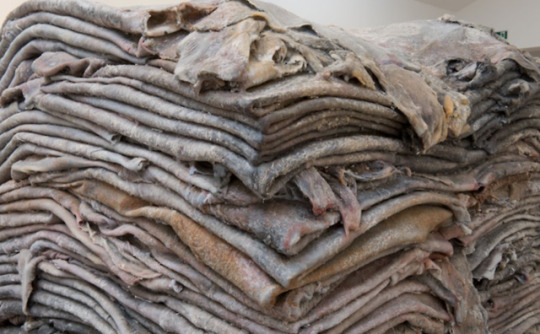
Week 8: Berlinde De Bruyckere, ‘Strange & Tales’, September 2018
Week eight’s readings were a number of how to instructions on casting. Bruyckere’s recent sculpture installations started of with the idea of a possibility to escape death and posing the question wether this is necessary. She works with late 90s blankets as a constant medium but in these particular works she casts the blankets using wax after leaving them out in nature for months allowing time to change their form. This is representative of wounds carried by a human; she aims to find beauty in this and represent them as not ugly or strange but something we have to deal with. The wax casting allows the piece to have a skin like appearance whilst staying true to the original blanket material.
8 notes
·
View notes
Photo
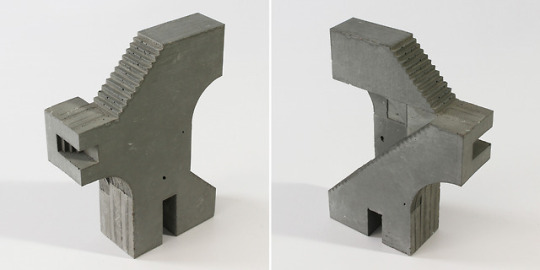
Week 12: David Umemoto, Stairway to Nowhere, 2017, Concrete
Traditionally a stairway is an element of architecture, a purposeful structure designed to lead to point A and B generally towards varying heights. This piece though is not an element of architecture it is a sculpture. Its very title ‘stairway to nowhere’ reverts any functional elements. What draws me to this sculpture is the different directions taken by the so called staircases in it giving it a Jim Henson Labyrinth atmosphere.
Umemoto’s sculpture relates to my own as it it taking something viewed as purposeful and allowing it to become a sculpture.
0 notes
Photo
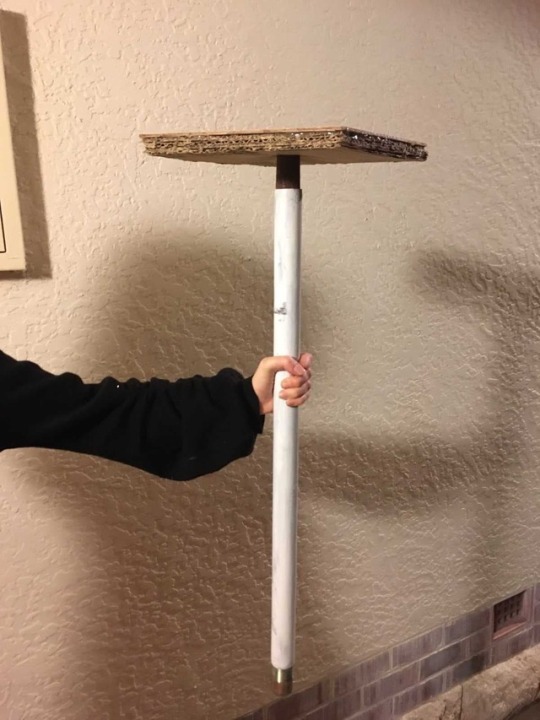
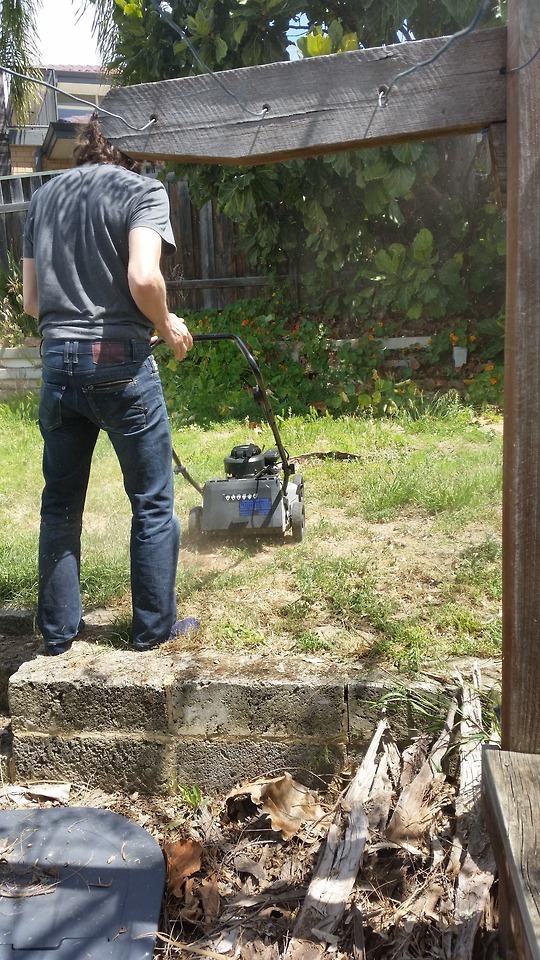
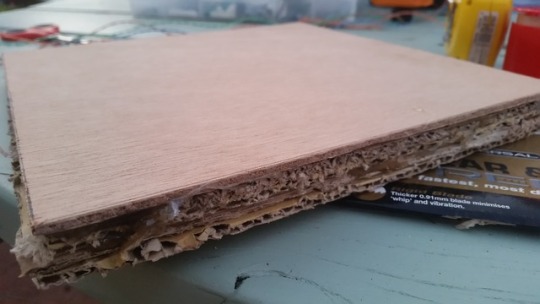
Week 12 progress:
The main challenge to overcome this week consisted of the nesting base that sits inside the cardboard frame and functions as a place for the birds to nest on and as the component that attaches the habitat to the structural pole. I initially was going to use plywood but opted for MDF I had in my garage and strengthened it with 4 sheets of cardboard and glued it all together. Measuring the correct size for this seemingly square proved difficult as each side was a different length. I made practise sheets with cardboard until I got the correct fit which ended up being 26.1 X 23.2 X 24.9 X 25.5cm and enables a 35.5cm diameter space for the nesting cockatoos. Still thinking along the lines of sustainable and recycled materials; my dad and I used the lawn mover to create DIY wood chips/mulch to line the the nesting base. Finally the structural pole is able to detach in half making the sculpture easy to transport.
1 note
·
View note
Photo

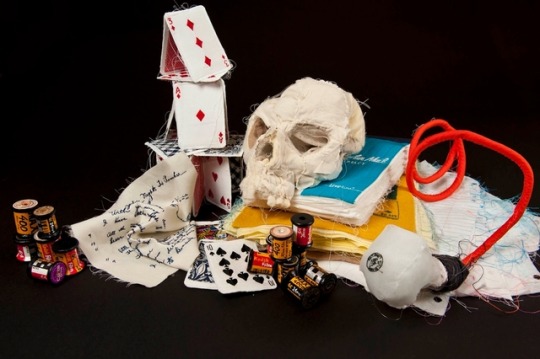
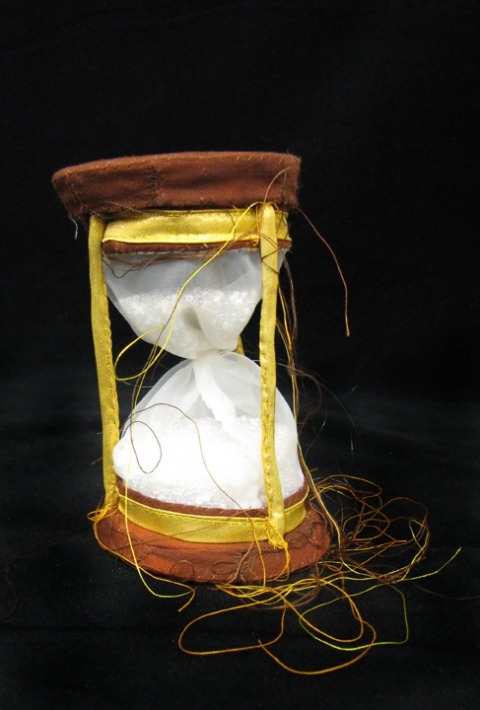
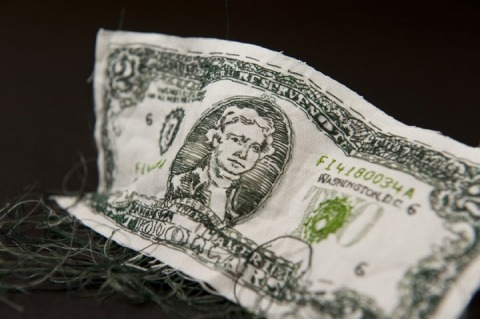
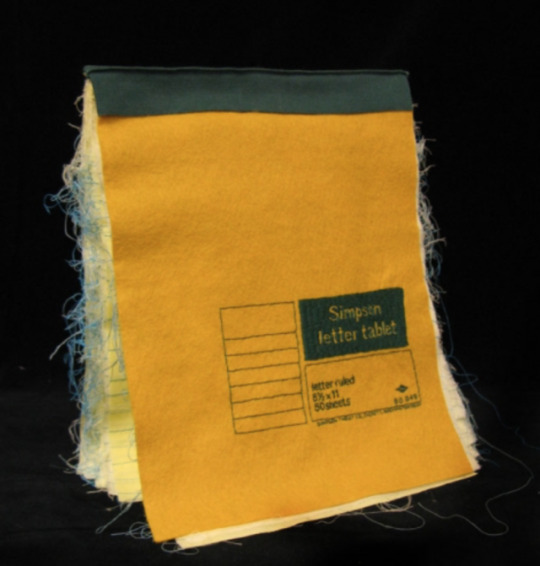
Week 11: Lauren DiCioccio, ‘Still Life’ installation, 2010
DiCioccio’s works are entirely embroidered and typically make up the form of objects off print-media and mass production which in the new digital age are facing ‘obsolescence’. The still life followed traditional methods of presentation as it conveys feelings or care, time spent and nostalgia which is relevant to her topic of obsolescence. Some traditional still life objects, particularly the skull and time glass were used to link it back to the traditional art form yet they were still objects are suggested time moving forward, a sense of memento mori.
Her artwork ties into this weeks reading by Lucy Lippard as embroidery is traditionally viewed as a craft and specifically as a women’s craft. Yet DiCioccio has turned these into objects to be viewed as art not craft and these pieces have found themselves on display at art galleries. In the reading it states that ‘hobby art’, such as embroidery, usually uses cheap materials and hence makes something from nothing. The materials here are very cheap; primarily felt, fabric and thread and with this 21st and 20th century objects have been created and given a greater meaning.
15 notes
·
View notes
Photo
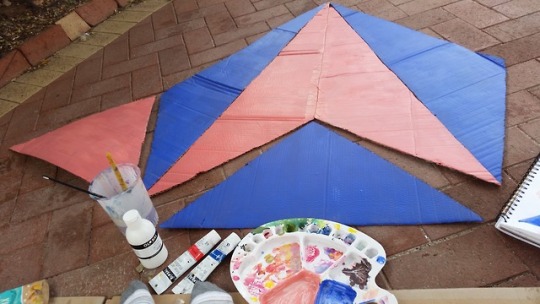
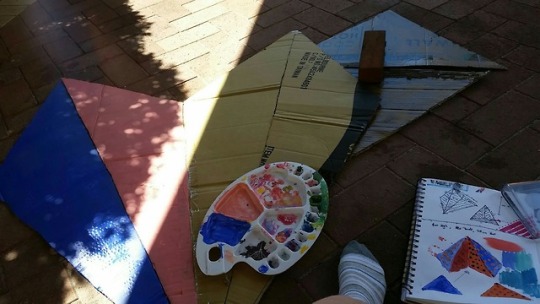

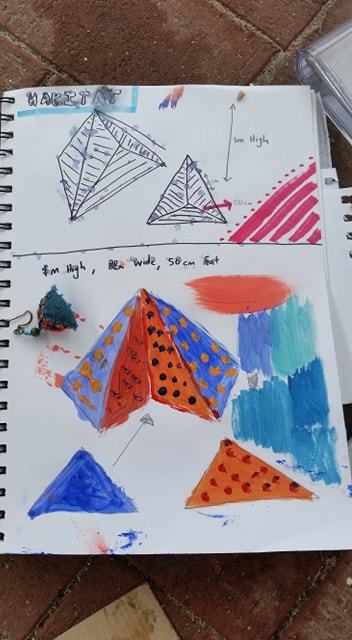
Week 11 progress:
Challenge - How to waterproof my cardboard; solution is to use a timber gloss finishing product and apply that to the wood, for the inside of the structure one layer is sufficient. I did samples and found it worked better on painted cardboard so for the outside of the structure using acrylics to paint it then covering that in the gloss product allows the cardboard to repel water.
Challenge - creating my wooden box for my base; this wasn't too difficult but I did come across the issue of not having enough wood to create a perfect box; my solution was to create a framed box, the two sides which will be covered by consist of only structural panels and for the lid I created a sunken top which required less material. I am more excited about the sunken top than the initial design as it will interact more interestingly with my plastic cloud.
0 notes
Photo
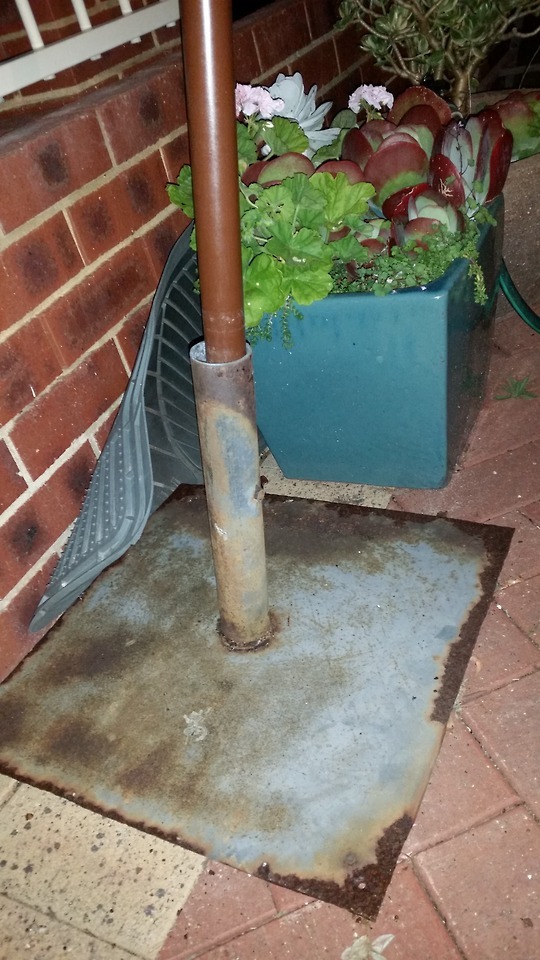


Week 10 progress:
Challenge - Sourcing a pole that would fit in securely in the 5cm wide pipe that is my base; solution is to use left over wood from the initial assignment to wedge into the sides surrounding the pole. The initial idea of concrete would be too expensive for such a small space.
Challenge - My metal base being off the verge means it has rusted and isn’t completely stable; solution is to weld tacks to secure the pipe to the base again.
Challenge - Logistics of the plastic ‘cloud’; solution is to use lightweight garbage bags and attach a bike pump to the side to blow it up with, and this can just lie over the top of my wooden frame weighted down with fishing weights.
Challenge - Sourcing enough cardboard; solution was combining my works supply with Julie’s works supply and Bunnings’ cardboard supply.
0 notes
Photo
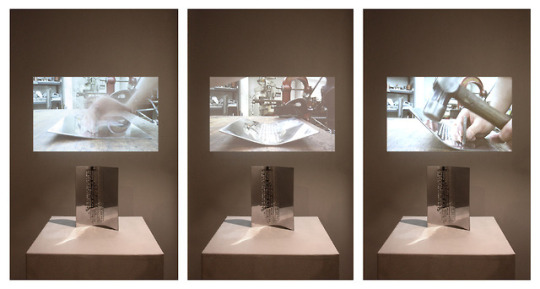
Week 10, Michael M Simon, ‘Hammer Thing’:
This weeks reading ‘The Thing’ looks into the thing and the object looking specifically at the jug which is said to be a vessel, to hold liquid essentially. Martin Heidegger believes something having a predetermined nature means this nature always existed for this purpose and this purpose wasn't brought to it through its maker; “the jug is not a vessel because it was made; rather, the jug has to be made because it is this holding vessel.” This is an interesting concept looking into the relationship between the maker and the object and can be applied to artworks. More often than not huge importance is placed upon the artist creating the work but this is often questioned in pieces where others are paid to assist in its creation and when curators put the piece together based of mere instructions. Simon’s work ‘Hammer Thing’ has a strong relationship to the tool as the maker of this artwork, it can be argued there is more importance on the role of the hammer rather than the artist himself.
11 notes
·
View notes
Photo
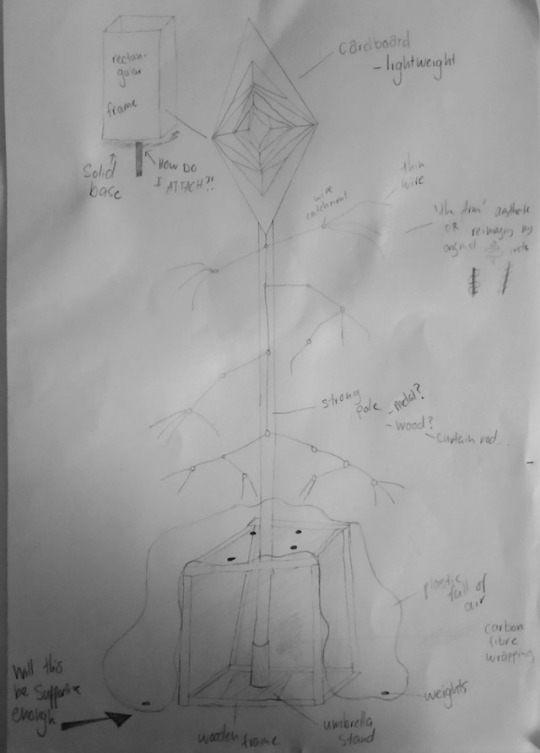
Week 9: logistics and getting my head around that design
This weeks technical issues surrounded trying to sort out logistics and aesthetics of the original surprise design. Sourced rustic heavy metal umbrella stand from verge collection which could possibly be supportive enough for the base of the pole. For the pole something either metal or wood; metal would be sturdier but would be harder to get it to the exact size of the umbrella stands hole and would be more difficult to attack the the “habitat” structure. A wooden pole would be more flexible and easier to attach but maybe not strong enough?
I re-envisioned elements of the original drawings to break the fourth wall as said in realistic theatre. The wavy air shape I have replaced and am hoping to test out using transparent plastics and a bike pump for an interactive element to the piece. And the curvy centre line I have broken up into multiple arms inspired by a tree like character from the show Twin Peaks. using thin wire for these arms will make the piece interactive with the wind. I decided to primarily use cardboard as it will be lightweight meaning the pole will be able to support it; to waterproof this I’m hoping to try out fabric waterproofers or wet wax to begin with.
1 note
·
View note
Photo
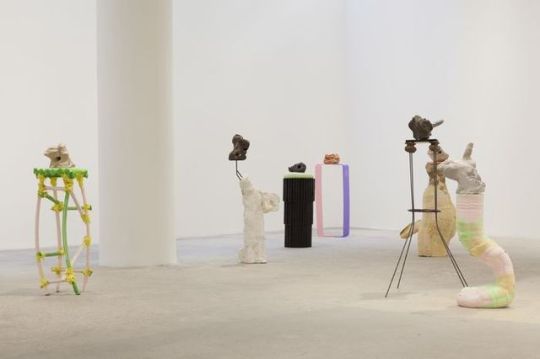
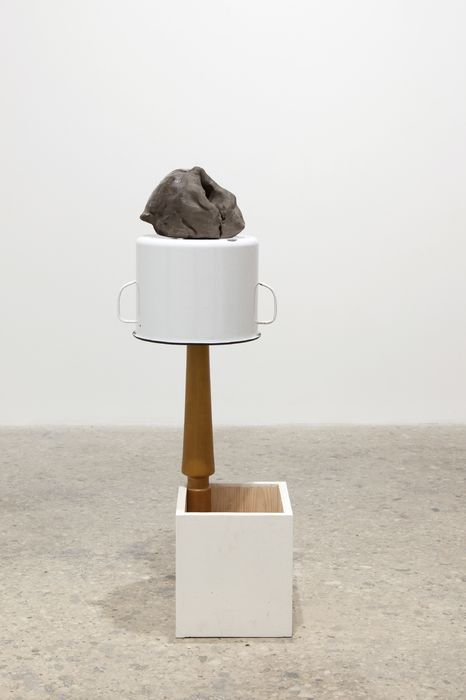
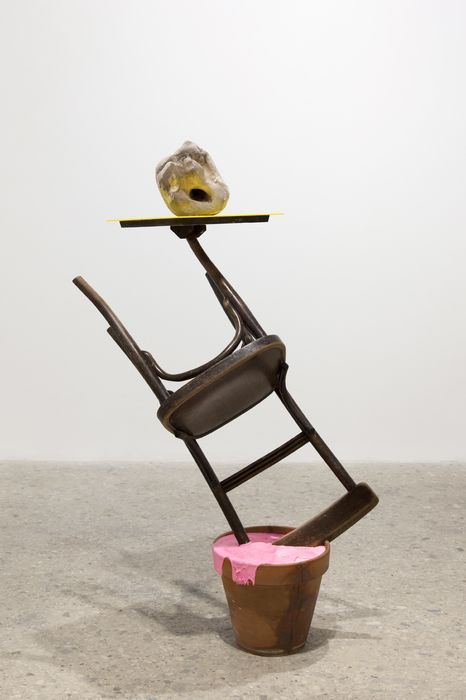

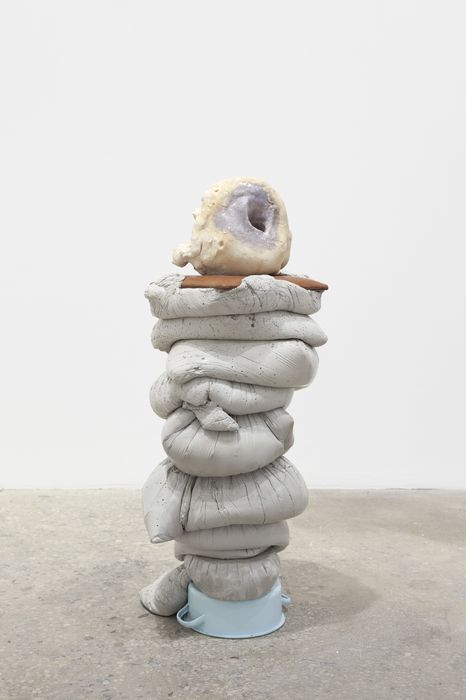
Week 9 - Gelitin “New York Golem” 2017
Initiating from Jewish folklore the golem becomes an humanoid form designed for inspection, for touch, and for lapping up their feeling. The ceramic forms that sit on their plinths were shaped by none other than Gelatin’s bodies and genitals and the plinths were made of materials gathered from around their studio. What I love about this piece is what drew me to it initially was the aesthetics, I found them extremely good looking to say it plainly. Then upon reading about them you can’t help but become even more drawn to the golems. The materials used resembles the material sourcing technique being used for the current plinth-thing-habitat project and these 40 or so pieces are quite refreshing to inspect.
9 notes
·
View notes
Photo
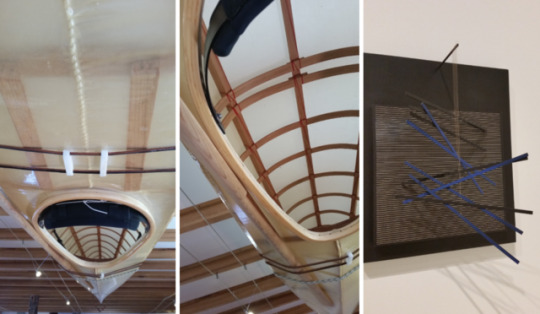
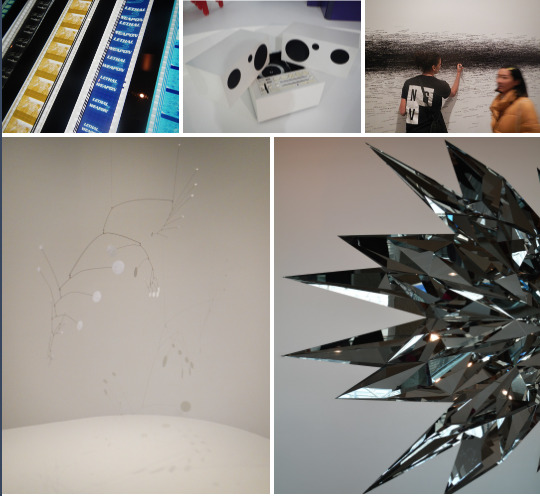
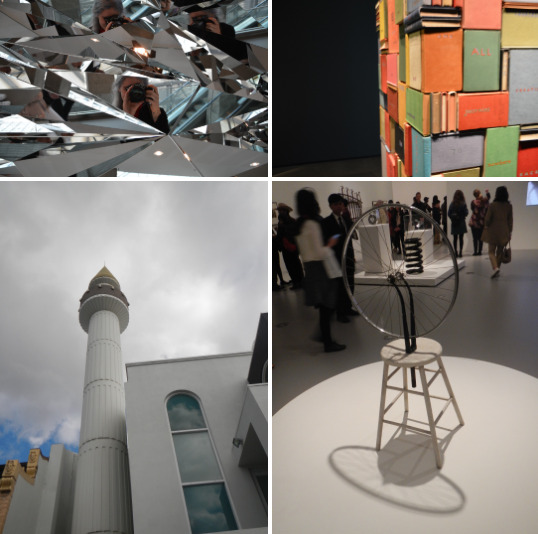
~Compiling My Inspiration From Over East For My Future Reference~
11 notes
·
View notes
Photo

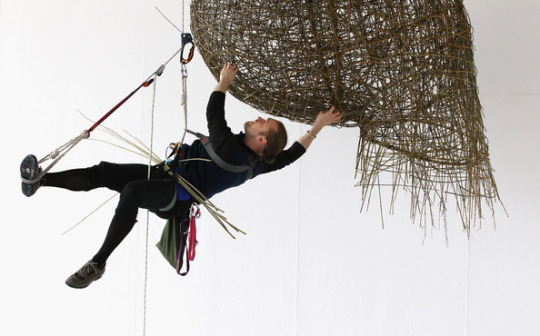
Week 7: Gareth Wynne Fitzpatrick ‘We’ve a man nest’ 2011
Fitzpatrick combined performance art and sculpture in the creation of his piece, the performance aspect is what intrigued me to his work as he is becoming a “bird man” to weave this together just as a bird creating a nest would do. This work explores the ideas surrounding the ‘natural world’ as well as ‘the physicality of the body’. The weave is created of natural materials but in theory it is man-made and therefore does this or does it not lie in the realm of the natural world? The combination of performance in the sculpture adds depth to the process behind the piece beyond its physical appearance, this reminds me of our task at hand whereby the drawing exercise can act as the performance either aiding or complicating the final sculpture or birds nest. The challenge in conceptualising Fitzpatricks piece for me is, is this a sculpture or is it a birds nest, and the same conceptual challenge exists for this project, am I creating a functional birds nest or am I creating a sculpture or can I find a way to mediate both of these elements into a final piece.
18 notes
·
View notes
Photo

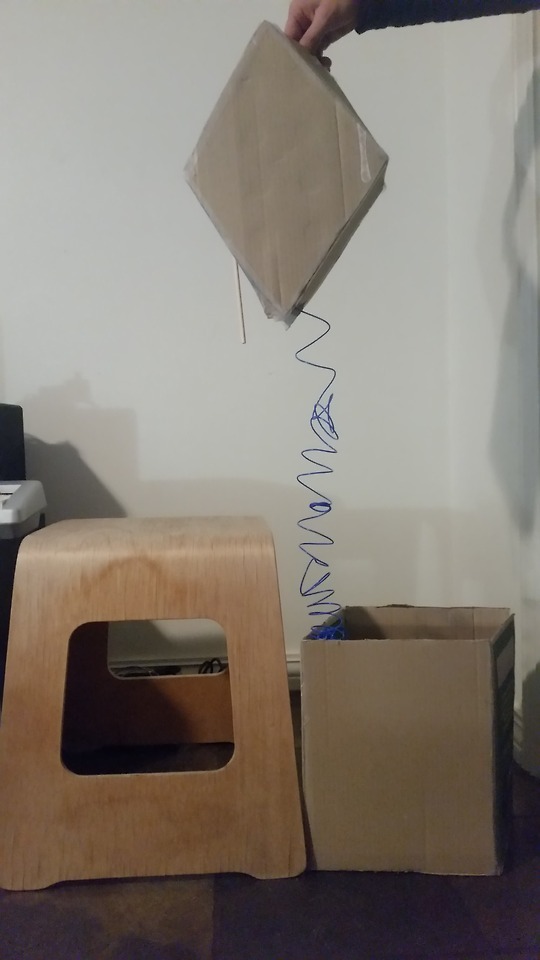

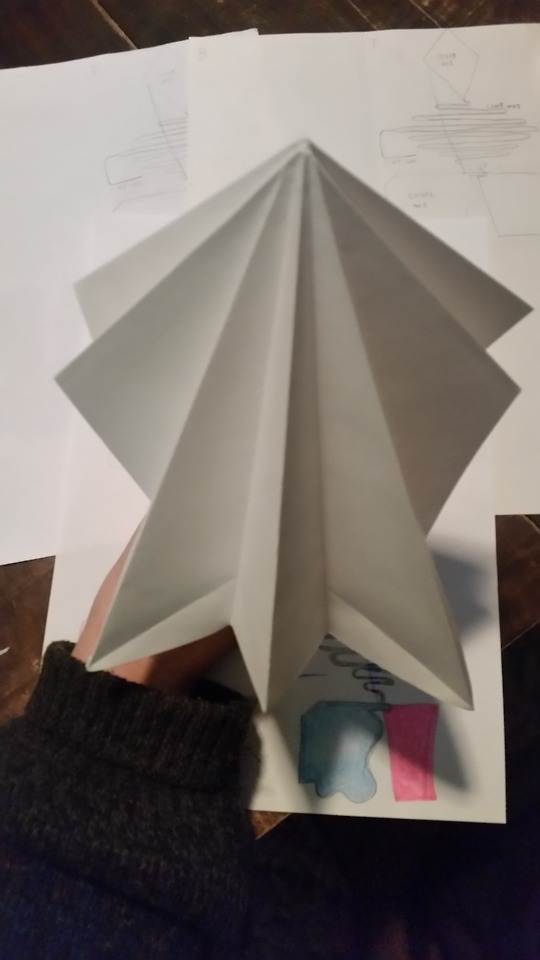
Week 7: Project two maquette and colour sketches
With very little time and motivation to spend on the beginnings of project two I focused on brainstorming materials I could conjure up this seemingly impossible design for a functional Carnaby Black Cockatoos birds nest.
Faux concrete, Malle roots, paper pulps, paper mâché, salvaged furniture, salvaged household items, hollow musical instruments, waterproofed fabric, wax, wood chips, concrete, aluminium, porcelain street lamp insulators.
I begun playing around with 3d shapes through folding paper and considered this as a way of constructing the diamond shape to construct what looks like a diamond but can in-fact be 3D with a more tube structure that can be functional to the birds nest requirements.
1 note
·
View note
Photo
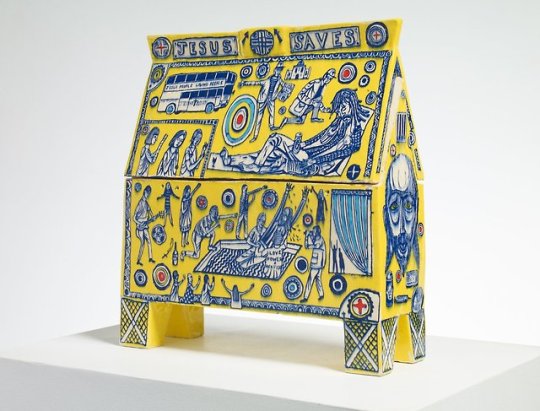
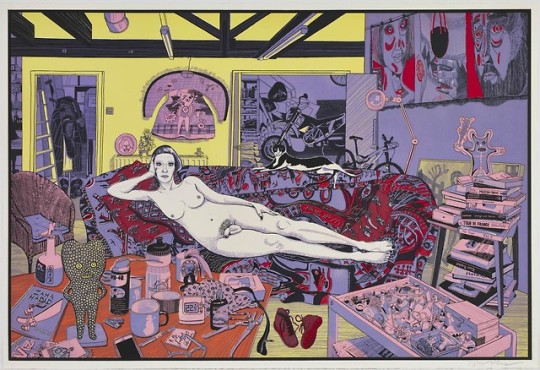
Week Six: Grayson Perry, ‘Jesus Army Money Box’, 2013
+ how appealing is his colour etching ‘Reclining Artist’, why is it so aesthetic!?
Grayson Perry’s ‘Jesus Army Money Box’ is a glazed ceramic piece and has a distinct appearance of craftsmanship due to the slightly uneven symmetry in the hand painting alongside the obvious joinings. According to Paz craft objects are objects of pleasure due to them being beautiful not despite their usefulness but because of it. Perry’s object is a functional money box but is presented beautifully in his unique style depicting a contrast between the subjects depicted and the use of bright coloured glazes. The ceramic piece is story telling and holds resemblance to the stories depicted on Ancient Greek ceramic vases and urns. Paz said these everyday objects were “uprooted from their historical context, their specific function, and their original meaning, standing there before us int heir glass display cases, strike out eye as enigmatic divinities and command our adoration”, Perry has combined the traditional story telling method with traditional hand craft but reverted it through the controversial story being told with its extremely bright eye capturing colours.
16 notes
·
View notes
